Public health - privacy notice
Health data in St Helens Borough Council
All local authorities have a legal duty to improve the health of the population they serve, as outlined in the Health and Social Care Act 2012. To support this, we use data and information from a range of sources, including hospitals, to understand more about the nature and causes of disease and ill-health in the area. We also use data including births and deaths of residents of the borough and registered patients of St Helens Clinical Commissioning Group. These allow us to investigate local mortality, understand the needs of local people better, and design services to ensure they meet these needs in the most efficient manner.
What data is used?
St Helens Borough Council Public Health will have access to the following data:
- Primary Care Mortality Database (PCMD) - The PCMD holds mortality data as provided at the time of registration of the death along with additional GP details, geographical indexing and coroner details where applicable.
- Births and Vital Statistics datasets - Births files include date of birth, sex, birthweight, address, postcode, place of birth, stillbirth indicators and age of mother. Deaths data includes: deaths broken down by age, sex, area and cause of death sourced from the deaths register.
- Hospital Episode Data (HES) - A data warehouse containing details of all admissions, outpatient appointments and A&E attendances at NHS hospitals in England. This data is collected during a patient's time at hospital and is submitted to allow hospitals to be paid for the care they deliver. HES data is designed to enable secondary (non-clinical) use.
- Secondary Uses Service (SUS) data - When a patient or service user is treated or cared for, information is collected which supports their treatment. This information is also used by commissioners and providers such as for healthcare planning and service commissioning, and is particularly important for the council as it works more closely with the Clinical Commissioning Group. SUS data used by the council will always be either anonymised or pseudonymised (see below).
- National Child Measurement Programme - We receive information on the heights and weights of pupils from the National Child Measurement Programme (NCMP). The local authority uses this for statistical purposes to monitor performance and produces reports with aggregated data for the participating schools.
The data used can contain person identifiable data (PID) which may identify patients, such as name, address, age, sex, ethnicity, disease, use of hospital services, and/or NHS Number. Some data may not be obviously identifiable, however there may be the potential to deduce individuals' identities through combinations of information, either by the people handling the data or by those who see published results.
How the data is used
To deliver public health, local authorities need to use available health data sources to get relevant health and social care information. All information accessed, processed and stored by public health staff will be used to measure the health, mortality or care needs of the population; for planning, evaluating and monitoring health; protecting and improving public health. It is used to carry out and support:
- health needs assessments;
- health equity analysis;
- commissioning and delivery of services to promote health and prevent ill health;
- public health surveillance;
- identifying inequalities in the way people access services;
- joint strategic needs assessment;
- health protection and other partnership activities;
- service commissioning and performance management.
The Public Health Team is committed to using pseudonymised or anonymised information as much as is practical, and in many cases this will be the default position.
- Pseudonymisation is a procedure by which the most identifying fields within a data record are replaced by one or more artificial identifiers, or pseudonyms. There can be a single pseudonym for a collection of replaced fields or a pseudonym per replaced field. The purpose is to render the data record less identifying and therefore lower customer or patient objections to its use.
- Anonymisation is the process of removing identifying particulars or details from (something, especially medical test results) for statistical or other purposes.
The local authority also may provide the local NHS with information on pupils (e.g. names and addresses) in order to facilitate vaccination and screening programmes, where necessary. Any information held by the council about individuals will be held securely (encrypted where applicable) and in compliance with the Data Protection Act 1998. Information will not be held for longer than required and will be disposed of securely.
Further information
The legal basis for the flow of data for the above purposes is set out in Section 42(4) of the Statistics and Registration Service Act (2007) as amended by section 287 of the Health and Social Care Act (2012) and Regulation 3 of the Health Service (Control of Patient Information) Regulations 2002. Residents and patients have the right to opt out of St Helens Borough Council receiving or holding their personal identifiable information. There are occasions where service providers will have a legal duty to share information, for example for safeguarding or criminal issues. The process for opting out will depend on the specific data and what programme it relates to.
For information, please contact St Helens Public Health Team:
St Helens Public Health
St Helens Borough Council
Atlas House
Corporation St
St Helens
WA9 1LD
publichealth@sthelens.gov.uk
For further guidance, the Information Commissioner is an independent regulator who provides advice and guidance on and enforces the Data Protection Act (DPA).




